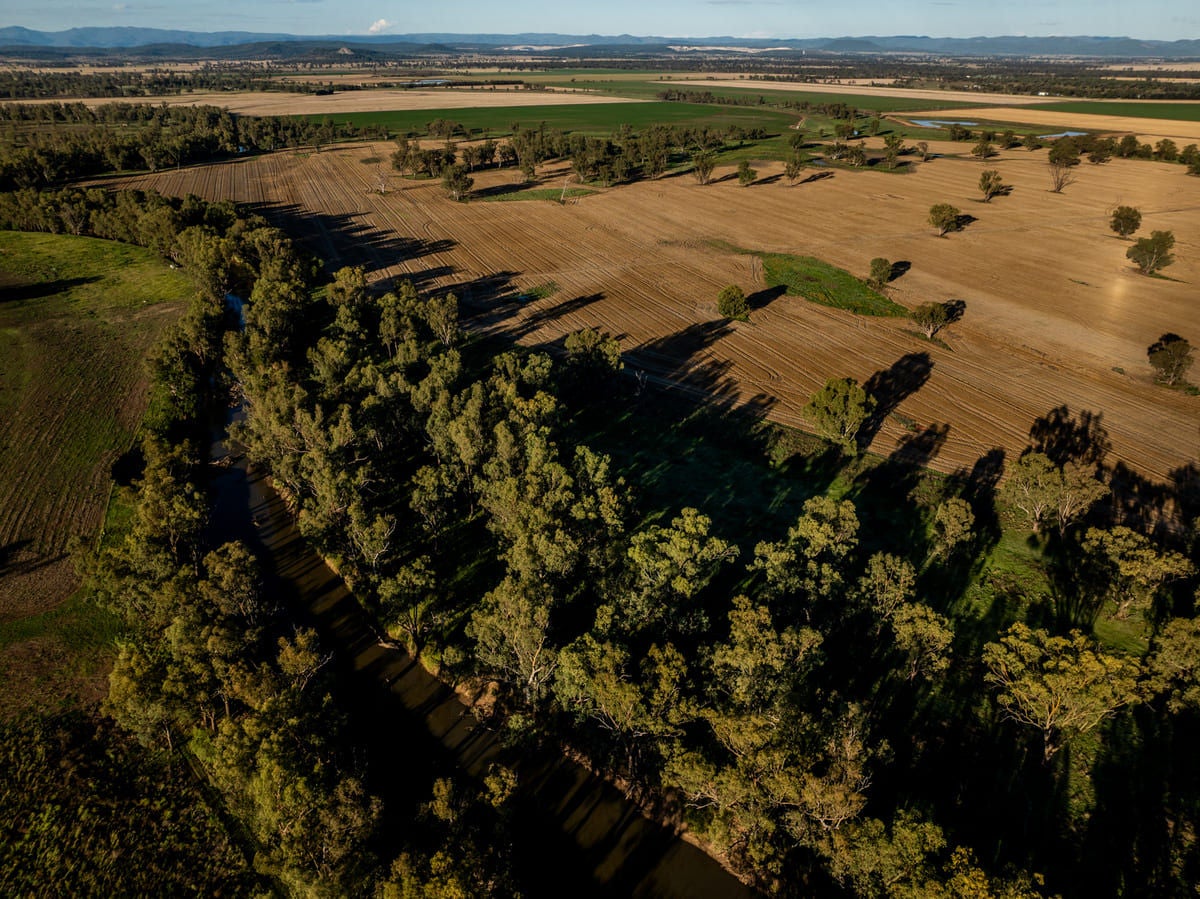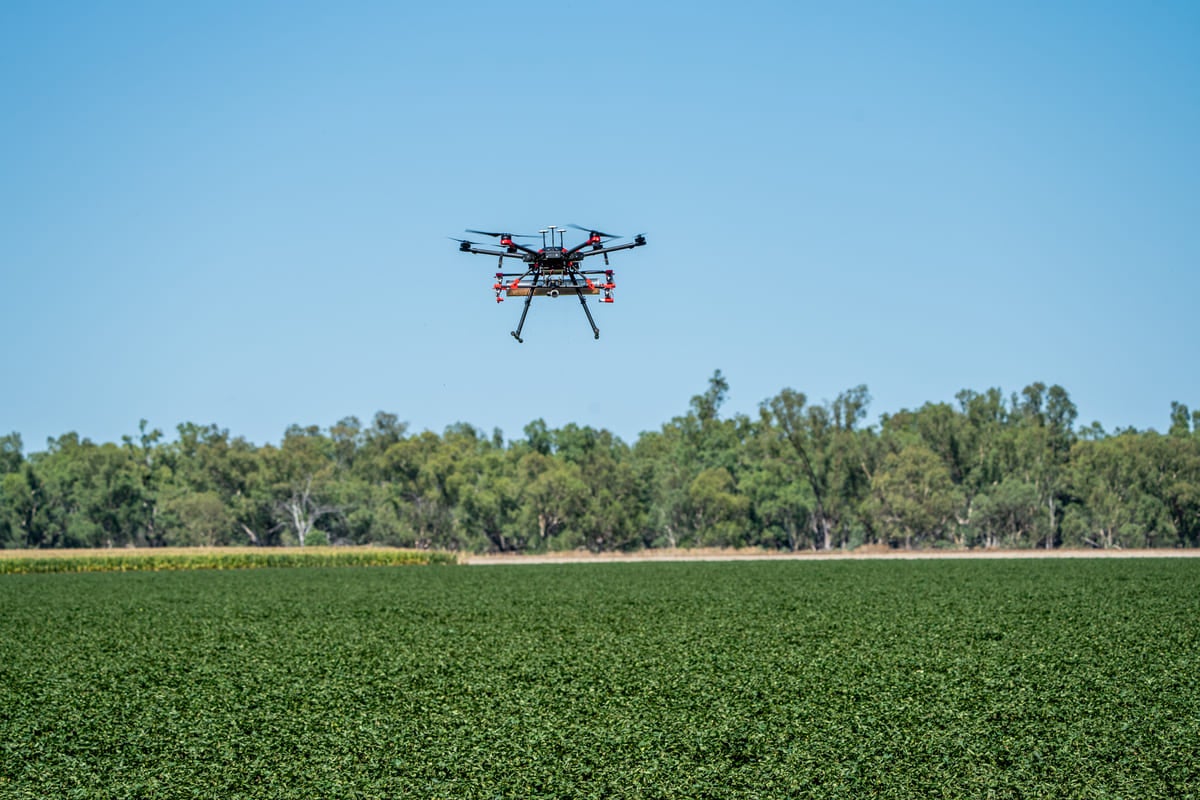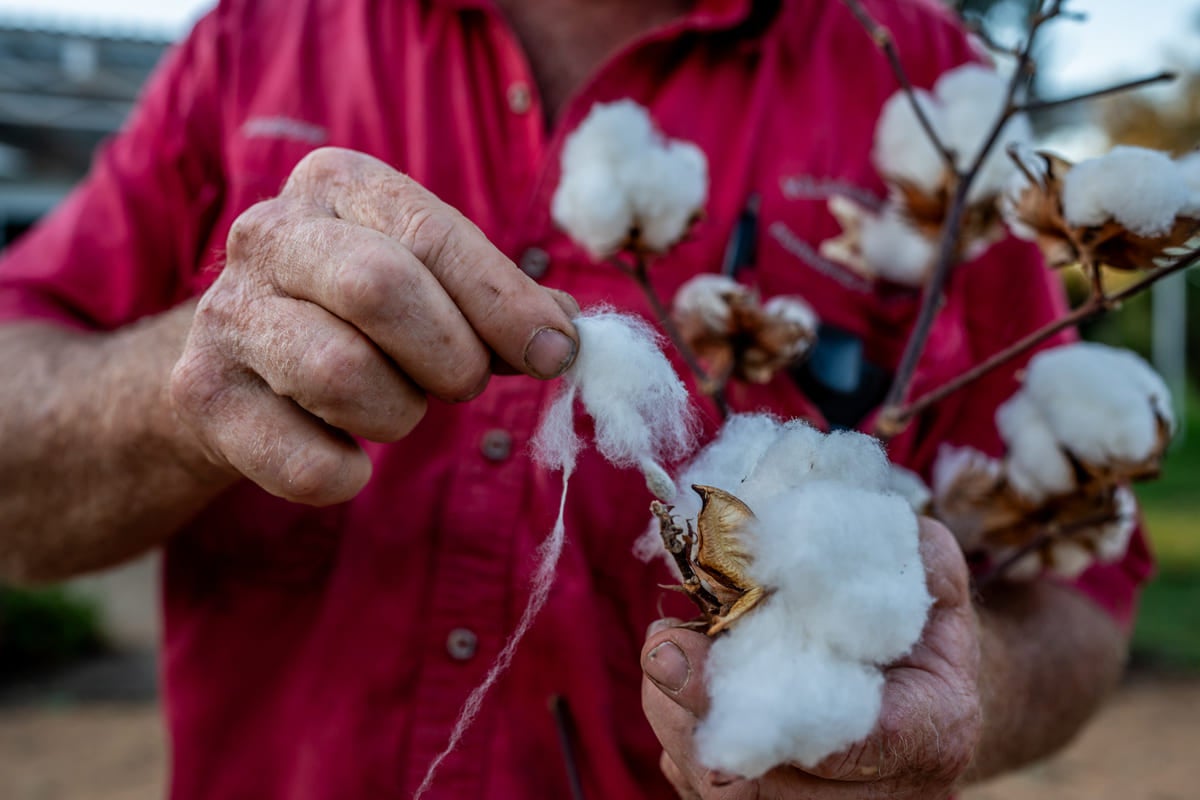Posted by on
14/05/2025
The information in the video is prepared for information purposes only, it is general in nature, does not consider the viewer’s personal circumstances, and should not be relied on as a basis for any financial decisions. Please refer to the full disclaimer at the end of this video.
Andrew Watson’s thirst for knowledge and innovation has driven the adoption of future-focused practices on his mixed cropping and grazing enterprise along the Namoi River near Boggabri in northern New South Wales.
An ethos and approach Andrew credits to his father, John, the “first cotton grower east of Narrabri” and his mother, Robyn, who began riparian plantings on the property 40 years ago.
“They were a bit of a leader in their fields at the time,” Andrew says. “Something to emulate, really.”
Andrew, his wife Heike, and their children have built on these practices, hosting “four or five full-scale trials a year” to test nutrient, water, pest and disease management on their 2600-hectare irrigated cotton, wheat, canola, corn and cattle grazing enterprise.
With a focus on “long-term economic and ecological sustainability”, Andrew analyses the cost-benefit of the proposed practice change while also considering if it can fit with the farm’s natural ecosystem. Believing “unless you are in the black, you can’t be green”.
Describing their strategy as a “building block approach,” Andrew says the riparian plantings and tree lines have helped create a “natural eco-corridor” for native insects, bats and birds, and helped serve as the foundation for the farm’s integrated pest management system.
“It all started with my mother trying to improve the riverine environment,” Andrew explains, with cattle grazing and flood events eroding the riverbanks.
The tree line plantings soon followed, initially to “help prevent spray drift off the farm” and then in later years to help stop it “drifting onto our farm”.
“So there were all these building blocks in place as we started to ask ourselves, what are some of the ways around insecticides? This got us looking at how nature deals with these insects. And this is where we started to get the view and the concept of beneficial insects.”

Considering that they had “a ready-made environment for them” with their tree plantings, Andrew says “the next step was to link those riverine environments with the remnant vegetation through the farm, giving all these little highways for the insects to travel and live in the times when there were no crops there.”
Learning through the research of PhD students, many of whom stayed on-farm to study the Watsons’ ecosystem, Andrew says, “the next thing we learnt is that birds and bats can also be our friends.
“So everything was sort of a stepping stone right through to believing, well let’s use nature to try and help us do what we want to do.”
This, Andrew says, saw them cease the use of insecticides for 11 years. However, by 2019, Andrew started looking for a different approach, as “costs were rising, but yields weren’t – they had sort of plateaued.
“The saying you have got to be in the black to be green came into play,” leading Andrew to conduct trials exploring “some targeted insecticides alongside trusting these beneficials”.
Hearing that “some people were releasing beneficial insects from drones in horticulture to help manage pests” and seeing it firsthand in California, Andrew was one of the first broadacre operators to take it up in Australia.
“For the past five or six years we have released on virtually every crop on the farm,” he explains. Among these, parasitic wasps have played a “crucial role”, with Andrew saying they lay their eggs inside the eggs of pests to prevent the pest eggs from hatching, while allowing the beneficial wasps to thrive. With the cycle repeating itself every 14 to 15 days.
“The on-farm data we are collecting, along with information from the insectaries, demonstrates we can effectively manage the pests. To the point where any time I have released insects on a pest, I have not had to spray for that insect. While there have been some years when a release wasn’t necessary, I look at it a little bit like insurance.”
For example, Andrew says when some of his neighbours sprayed their canola earlier this year for aphids, “the only aphids we could find on our farm were heavily parasitised by beneficial wasps already. So the question for me then is, are we building up our on-farm population?
“We will continue to do our on-farm research to see what’s happening, taking notes and making sure we know what’s going on with our plants, our crops. But we are currently seeing some great outcomes.”
Andrew says it not only “stacks up economically” for him, but is a “feel good thing”.
“You can look people in the eye and say I am doing my best to help grow sustainable food and fibre; this is what I am doing.”

Not only has chemical usage decreased on the Watsons’ property, and Andrew says in the cotton industry more broadly, but water use efficiency has increased from “one megalitre, per bale, to two bales on-average over the last 25 years”.
Andrew’s long-held interest in water use efficiency saw him awarded a Nuffield Scholarship in 2006 to study systems in Morocco, Spain, China, the US and Germany, while he has also travelled extensively throughout Australia looking at different irrigation systems.
Adapting irrigation systems on the property for water efficiency as well as labour efficiency, Andrew believes water is “a lot about management and a bit about infrastructure”.
Using probes to measure the soil moisture profile at 10-centimetre intervals, the Watsons also have temperature sensors in the canopy of the crop to measure “how hot the plant is getting because if it’s too hot, it can stop growing and put all its water into air conditioning itself.”
Learning a lot about overhead sprinkler irrigation and automated bankless channel systems of irrigation, Andrew says “we probably irrigate more often than we used to, but we are using less water.”
While yields, he estimates, have gone up in the vicinity of 50 to 70 per cent across the cotton industry.
“So we are getting a high yield with the same amount of water use per hectare. We see ourselves as part of an industry that responds, that’s what makes it so exciting.”
Andrew says their enterprise is looking at ways to help reduce their fuel usage and carbon emissions through more efficient engines on bores and tractors, but also at more efficient nitrogen usage so that “more nitrogen goes into the plant, not into the atmosphere.
“There are a couple of ways we are looking at that,” he says. “We are always looking at how we can apply nitrogen in the numerous trials we have been doing.”
This has seen them “put anhydrous ammonia in deep and cold in winter so it doesn’t change into a form that can be released into the atmosphere very quickly”. As well as, treatments where a liquid is added to the gas to help slow the release of the nitrogen.
“This year we put on half our nitrogen with the anhydrous ammonia treatment, and we have also trialled coated, or treated, urea.”

Andrew, who has worked in partnership with Country Road and Landcare Australia as part of their Biodiversity Project, is a long-term adopter of the industry’s myBMP (Best Management Practices) program and sits on numerous boards and representative bodies, says it’s important that farmers “lead the narrative”.
“It’s really important they understand we have a duty to the environment. But we don’t have the entire duty, the public should also be contributing to a public good.
“We are certainly doing our best putting our time in, and while we may not look like a forest, we are a farm. And there are a lot more trees here now with the plantings. That’s the way I tend to look at it.”
Disclaimer: This case study is published by Rabobank Australia Limited ABN 50 001 621 129 AFSL 234700 and Coöperatieve Rabobank U.A. (Australia Branch) ABN 70003917655 AFSL 238446 (together, “we” or “us”). The information in this case study is based on information provided to us by the clients to whom it relates. We have attempted to accurately reflect that information in this case study but do not represent, guarantee or warrant that is complete or accurate. The views and opinions expressed are those of the clients quoted as making them or are paraphrased from information provided by them, and reflect their experiences and judgements. Accordingly, no part of this case study constitutes advice and should not be relied upon as a basis for any business or financial decisions. We do not accept any liability for any loss or damage arising out of any error or omission in this publication or arising out of any reliance or use of this publication or its contents or otherwise arising in connection therewith. This publication may not be reproduced or distributed in whole or in part, except with our prior written consent.
